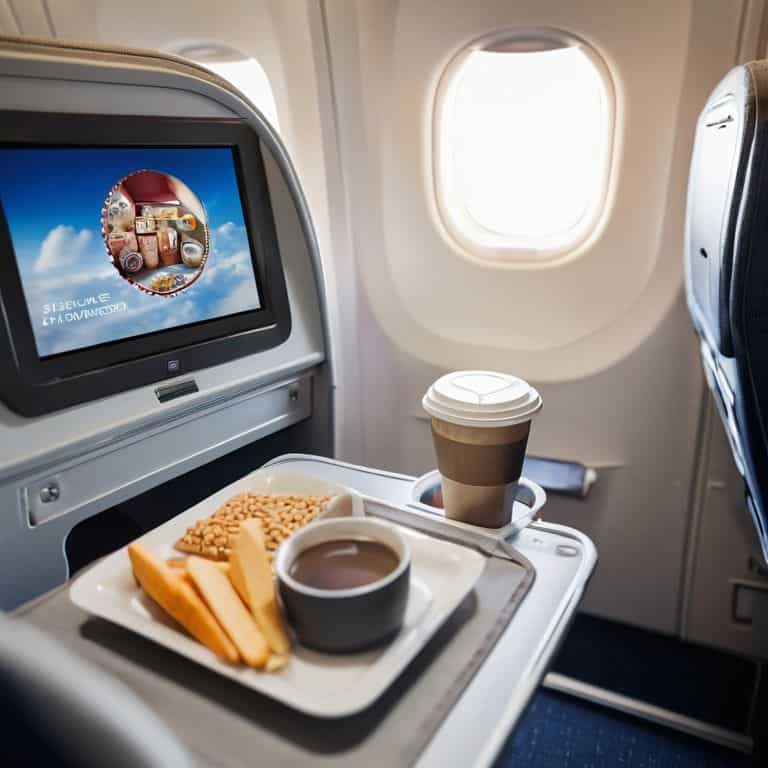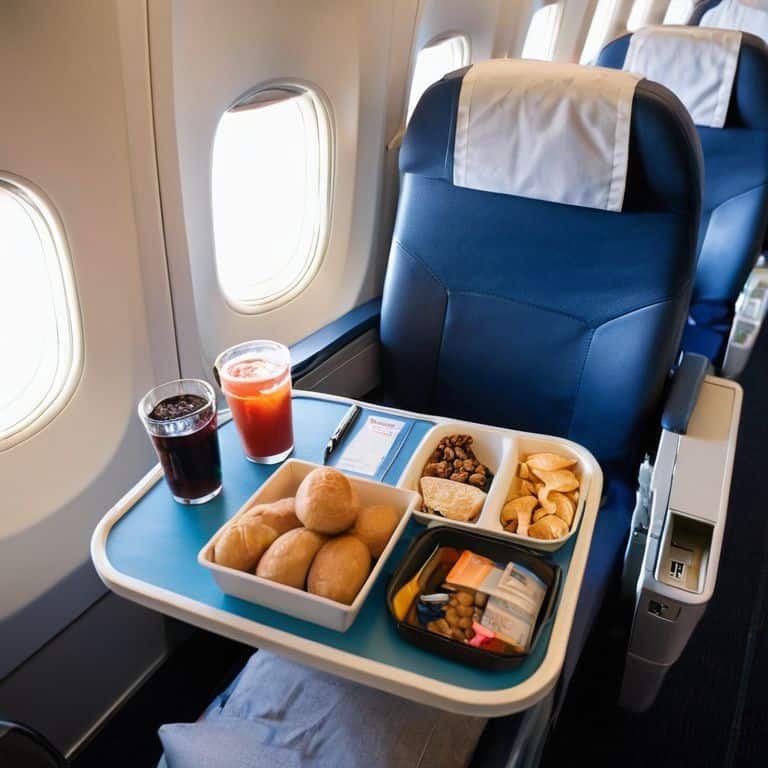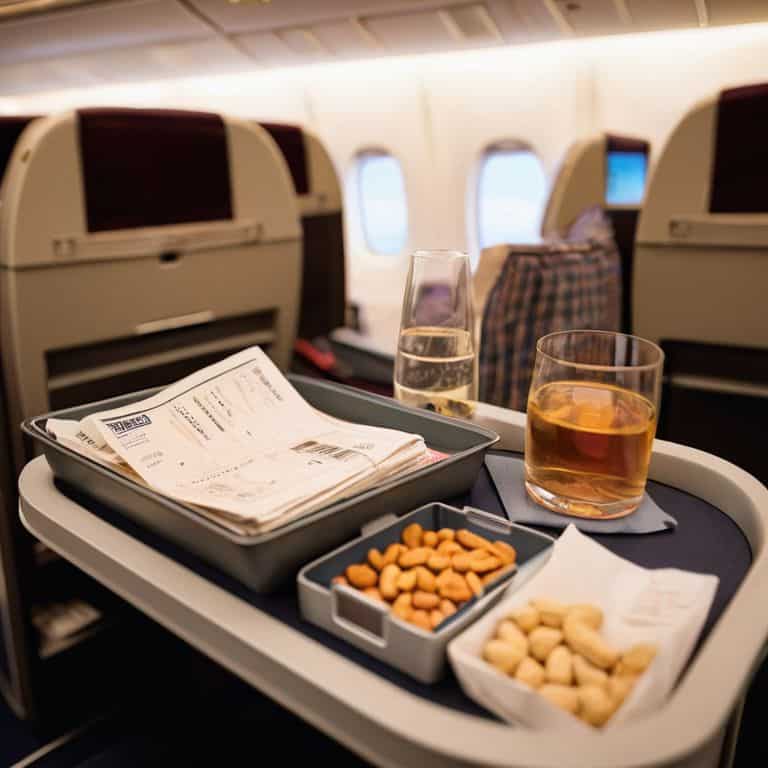I still remember the first time I attended a shareholder meeting for a major airline, and the CEO boasted about the company’s innovative approach to _generating revenue_. As I sat there, listening to the presentation, I couldn’t help but think about the real story behind how airlines make money. It’s not just about ticket sales or fancy in-flight amenities; it’s about the intricate web of financial strategies that keep these billion-dollar businesses afloat. I’ve spent years studying the aviation industry, from my days as a financial analyst for a major aerospace manufacturer to my current role managing a private fund focused on aviation stocks.
As someone who’s spent decades analyzing the financials of airlines, I’m here to tell you that separating fact from fiction is crucial when it comes to understanding how airlines make money. In this article, I’ll share my expertise and provide you with a clear-eyed, data-driven view of the aviation market. I’ll cut through the hype and give you a straightforward look at the balance sheets and market trends that truly drive this industry. My goal is to empower you with the knowledge you need to make informed decisions, whether you’re a seasoned investor or just curious about the business of aviation.
Table of Contents
Billion Dollar Skies

As I delve into the airline business models, it’s clear that the industry’s profitability isn’t just about ticket sales. Airlines are raking it in from in flight entertainment revenue, which has become a significant contributor to their bottom line. From movies to music, and even live TV, the options available to passengers are not only a convenience but also a lucrative stream of income for airlines.
The clever use of airline frequent flyer programs is another aspect that catches my attention. These programs have evolved into sophisticated marketing tools, allowing airlines to collect valuable data on their customers and offer targeted services. This not only enhances customer loyalty but also opens up new avenues for revenue generation. For instance, airlines can partner with credit card companies to offer co-branded cards, earning a fee for each transaction made.
My analysis of the industry also highlights the importance of auxiliary revenue streams, such as airline baggage fees and on board meal sales. These may seem like minor contributors, but they add up to billions of dollars in profit each year. By understanding these revenue streams, investors can gain a more comprehensive view of an airline’s financial health and make informed decisions about their investments.
Airline Business Models Explained
As I delve into the financials of airlines, I notice that their business models are built around efficiency. This means optimizing routes, schedules, and fleet utilization to minimize costs and maximize revenue. It’s a delicate balance, but one that can make all the difference in an industry where margins are razor-thin.
A closer look at airline business models reveals a complex web of revenue streams, including ticket sales, ancillary services, and partnerships. I find it fascinating to see how airlines use dynamic pricing to adjust ticket prices based on demand, ensuring they’re always maximizing revenue from each flight.
In Flight Entertainment Revenue Streams
As I delve into the world of in-flight entertainment, I notice a significant revenue boost from the sales of premium content and streaming services. Airlines are now partnering with popular streaming platforms to offer exclusive content, making long-haul flights more enjoyable for passengers.
The ancillary revenue generated from in-flight entertainment is substantial, with some airlines earning millions from the sale of movies, TV shows, and music. This additional income stream helps airlines stay competitive in a crowded market, and I believe it’s an area that will continue to grow in importance.
How Airlines Make Money

As I delve into the world of aviation finance, I’m reminded that airline business models are constantly evolving. One significant revenue stream is in-flight entertainment, which has become a major player in the industry. Airlines are now offering a wide range of services, from streaming movies to live TV, and even internet access. This not only enhances the passenger experience but also provides a substantial source of income.
Airlines are also leveraging their frequent flyer programs to generate additional revenue. By offering loyalty points and rewards, airlines can encourage customers to fly with them repeatedly, resulting in increased ticket sales and airline baggage fees. Furthermore, airlines are also generating revenue from on board meal sales, which can be a significant source of income, especially on long-haul flights.
In addition to these revenue streams, airlines are also making money from airport parking fees. Many airports offer parking facilities, and airlines can earn a commission from these services. By diversifying their revenue streams, airlines can reduce their dependence on ticket sales and increase their overall profitability. This is a key aspect of successful airline business models, and one that I closely monitor in my analysis of the industry.
Frequent Flyer Programs and Baggage Fees
As I delve into the financials of airlines, I notice that frequent flyer programs have become a significant revenue stream. These programs not only encourage customer loyalty but also provide airlines with a steady flow of income from mileage sales to credit card companies and other partners.
The introduction of baggage fees has also been a game-changer for airlines, allowing them to capitalize on a service that was once included in the ticket price. This shift has resulted in billions of dollars in additional revenue for the industry, making it a crucial component of an airline’s financial flight plan.
On Board Meal Sales and Airport Parking Fees
As I delve into the financials of airlines, I notice that on-board meal sales are a significant contributor to their revenue. It’s not just about serving meals; it’s a strategic move to increase profitability. Airlines have been optimizing their menu offerings to cater to a wide range of tastes and dietary preferences, making sure to charge a premium for the convenience.
Airlines also generate substantial revenue from airport parking fees, which might seem like a minor aspect but adds up significantly. By managing their parking facilities efficiently and charging competitive rates, airlines can create an additional revenue stream that complements their core business of flying passengers from one destination to another.
Navigating the Financial Flight Plan: 5 Key Tips on How Airlines Generate Revenue
- Understand the Ancillary Revenue Model: Airlines make billions from extras like checked bags, in-flight meals, and seat selection, so it’s crucial to factor these into your investment analysis
- Monitor Fuel Hedge Strategies: With fuel costs being a major expense, airlines that effectively hedge against price volatility can significantly impact their bottom line, making them more attractive investments
- Recognize the Value of Frequent Flyer Programs: These programs are cash cows for airlines, providing a steady stream of revenue through membership fees, partnerships, and redemption bookings
- Assess the Impact of Airport Fees and Charges: From parking and landing fees to concessions, airports are a significant source of revenue for airlines, and understanding these fees can provide insight into an airline’s profitability
- Analyze On-Time Performance and Fleet Age: As I always say, an airline’s financial health can be predicted by its fleet age and on-time performance data – younger fleets and punctual flights often correlate with higher customer satisfaction and, by extension, increased revenue
Key Takeaways from Billion-Dollar Skies
I’ve identified that airlines’ financial health can be significantly predicted by analyzing their fleet age and on-time performance data, which directly impacts their operational efficiency and customer satisfaction
The aviation industry’s revenue streams are diversifying beyond traditional ticket sales, with significant profits coming from ancillary services such as in-flight entertainment, baggage fees, and on-board meal sales, which are crucial for investors to consider
Understanding the complex interplay between fuel prices, airline business models, and market trends is essential for making informed investment decisions in the aviation sector, and my analysis provides a data-driven framework for navigating these factors
The Aviation Industry's Profitability Paradox
Airlines don’t just fly passengers, they fly revenue streams – from baggage fees to in-flight entertainment, and it’s the clever manipulation of these ancillary services that separates the profitable carriers from the ones left grounded.
Edward Finch
Flying High on Profit

As I’ve delved into the financial flight plan of the aviation industry, it’s clear that airlines make money through a combination of clever business models, strategic revenue streams, and a keen eye on expenses. From frequent flyer programs and baggage fees to on-board meal sales and airport parking fees, the opportunities for profit are diverse and multifaceted. By understanding these dynamics, investors and enthusiasts alike can gain a deeper appreciation for the complex interplay of factors that drive the industry’s bottom line. Whether it’s the ancillary services that add up to billions in profit or the fleet management strategies that minimize costs, there’s no denying that the aviation industry is a fascinating and lucrative space.
As we touch down on our exploration of how airlines make money, I’m reminded that the sky’s the limit when it comes to innovation and growth in this sector. With the global demand for air travel continuing to rise, the potential for sustainable profitability is vast. As an investor and analyst, I’m excited to see how the industry will evolve in the years to come, and I’m confident that by staying focused on the fundamentals and keeping a close eye on the data, we can all navigate the ups and downs of the market with informed insight and make informed decisions that will propel us forward.
Frequently Asked Questions
What role do fuel hedging strategies play in an airline's overall revenue management?
Fuel hedging is a crucial component of an airline’s revenue management, allowing them to lock in fuel prices and mitigate volatility. By forecasting fuel costs and securing favorable rates, airlines can better manage their margins and protect against price spikes, ultimately bolstering their bottom line. My spreadsheet tracking global fuel prices has been invaluable in analyzing this aspect.
How do airlines balance the revenue generated from ancillary services with the potential impact on customer satisfaction?
To balance ancillary revenue with customer satisfaction, airlines must walk a fine line. I’ve seen it in my analysis: a well-designed fee structure can boost profits without alienating passengers. Key is transparency and perceived value – if extras feel like a rip-off, customers will revolt.
Can airlines sustain profitability through loyalty programs and partnerships, or are these revenue streams vulnerable to market disruptions?
I believe airlines can sustain profitability through loyalty programs and partnerships, but they’re not immune to market disruptions. A well-managed loyalty program can generate significant revenue, and strategic partnerships can expand an airline’s reach, but they must be carefully monitored and adapted to changing market conditions to remain effective.



